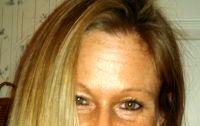Botox For Furrow Lines
Botox helps with dynamic lines only
Botox will not do much for folds and furrows in the skin (better treated with fillers) but it does help with the fine lines and wrinkles.
The way it works is by relaxing the muscles that are causing the creases and lines when they are contracted.
By relaxing the muscles you remove the tendency to create the crease. By contrast, lines that exist at rest will be unaffected by Botox and so fillers or lasers may better help with these problem lines and can be used in conjunction with Botox if the fold or crease is caused by muscle activity AND sun damage or aging. (Shawn Allen, MD, Boulder Dermatologist)
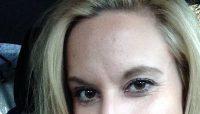
A Stubborn Frown Line
Botox/Dysport is not for all wrinkles.
Botox and Dysport are used to reduce wrinkles caused by movement of facial muscles. The most common areas are between the eyebrows, around the eyes and on the nose.
For larger furrows that are not associated with movement, like the tear trough areas under the eyes, or grooves in the cheeks, fillers are more effective.
There are occasions when Botox or Dysport work well in addition to fillers, when there are severe wrinkles caused by movement that have etched wrinkles into the skin. I am very proud of the results we have achieved with our patients. (David C. Mabrie, MD, Bay Area Facial Plastic Surgeon)
Botox works best around the eyes, but has other benefits.
Botox & Dysport work best to eliminate wrinkles caused by repetetive muscle action (as opposed to those caused by gravity or skin aging). The ideal place for benefit, therefore, is relaxation of the furrows in between the eyebrows, the crows feet, and the forehead itself- leading to a younger look.
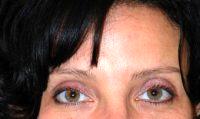
Botox And Dermal Filler To Frown Lines By Dr Jennifer Parker Porter, MD, FACS, Bethesda Facial Plastic Surgeon
They are simple, quick treatments that require NO downtime, and can be performed just a few times per year for substantial benefits! Other areas for which it is useful deserve honorable mention too, such as the sides of the nose (bunny lines), the muscles at the corner of the mouth (downward smile), vertical lip lines, a dimply chin, and neck bands.
The most important consideration is to find an experienced physician injector who will help you achieve your goal in a natural appearing way….someone who knows where Botox will help and where it won’t. (Randolph Capone, MD, FACS, Baltimore Facial Plastic Surgeon)
Botox is only good for certain wrinkles
Wrinkles on the face are divided into static and dynamic wrinkles. Static wrinkles are present when your face is completely at rest or relaxied. Dynamic wrinkles are present when the muscles of facial expression are engaged, such as those that appear when you smile or frown.Muscles of facial expression contract when they get a signal from a nerve to do so. Botox works by interrupting this signal..
When this signal is interrupted, the muscles do not contract, and the dynamic wrinkle is not visible.
However, the wrinkles that are present when your face is relaxed (static wrinkles) are not affected by muscle contraction and will be present whether Botox is injected or not. It’s true that many static wrinkles start out being dynamic and over time form a permanent furrow on your face.
Botox injections while the wrinkle still goes away when your face is relaxed is the trick to stopping the formation of a static wrinkle. Static wrinkles, and many wrinkles in general, are also formed by chronic sun exposure, so in addition to injectables, protecting your skin from the sun will help with future wrinkling. (Emily Altman, MD, Short Hills Dermatologic Surgeon)
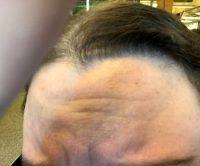
How To Get Rid Of Frown, Glabella Or Furrow Lines On Forehead
Botox works for certain wrinkles
Botox works well for fine wrinkles but is less effective for deeper furrows. Wrinkles that persist despite Botox often require a filler to camouflage them. The deep creases around the mouth (nasolabial and melolabial lines) will not improve with Botox.
Also, certain wrinkles such as the small wrinkles around the mouth are due to a very important functional muscles. Botox in this area is unwise as it could affect speech and oral competence. (David Bogue, MD, Boca Raton Plastic Surgeon)
Botox Beverly Hills
Botox Cosmetic is FDA approved for the management of glabellar furrows. Having said that, Botox is used manage a multitude of facial dynamic rhytids, spanning several facial areas. These include the forehead, crowsfeet and bunny lines.
Botox is also used to manage platysmal banding in the neck. It can be used to contour the brow, soften ptotic corners of the mouth, and diminish peri-oral wrinkling. (Glenn Vallecillos, MD, FACS, Beverly Hills Plastic Surgeon)
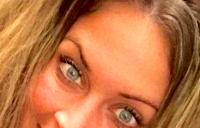
Training Muscles And Botox
Where Botox is Used
Botox is traditionally advised for facial line and furrows that lie in facial areas above a line drawn true the pupils of the eyes.
Advanced users can use botox in certain areas of the face lying below the interpupillary line. (Sanusi Umar, MD, Redondo Beach Dermatologic Surgeon)
Botox works for many wrinkles but not all wrinkles
Physicians will use Botox to decrease wrinkles due to the action of certain facial muscles ,such as on the forehead, between the eyes, crows feet, upper lip lines, the lip depressors and the bands of the neck.
There are many other facial lines that are due ,more to loss of soft tissue volume and loss of elasticity ,and Botox won’t improve them. When one is dealing with a lot of facial lines or deep facial lines it is important to consider using dermal fillers in combination with some sort of resurfacing procedures such as fractional CO2 laser resurfacing.
That’s why it’s important to receive your Botox from someone who’s knowledgeable about assessing and treating facial lines, not by someone who works at a walk-in spa at the local mall. (Joseph M. Perlman, MD, Houston Plastic Surgeon)
Botox is great for the right indication
botox is generally used for winkles of the forehead, crow’s feet, area between the eyes. For these areas it offers the best results compared to other modalities. Use in other areas is either not recommended or not advised. (Randy Proffitt, MD, Mobile Plastic Surgeon)
BOTOX works for forehead wrinkles and crows feet
BOTOX is a very effective way to smooth wrinkles of the forehead, the area between the eyes and crows feet. The lines that are formed perpendicular to the muscles contracting in the area are best treated.
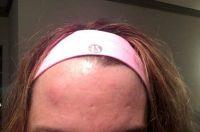
Reduce The Appearance Of Furrow Lines
A tiny needle is used to inject the BOTOX directly into the areas of concern. The treatment renders little to no pain. (Benjamin Schlechter, MD, FACS, Reading Plastic Surgeon)
Only the lines that move!!
Botox is used to reduce wrinkles that are due to muscle motion on the face and neck areas. When the muscles are weakened, the wrinkles that get produced are softened. The effects of Botox last approximately 3 months, but with time the weakness tends to last longer.
Any fixed wrinkles in the skin have to be repaired with skin care, injectible filler, and/or laser resurfacing. (Manish H. Shah, MD, FACS, Denver Plastic Surgeon)
Making “frown lines” go away with BOTOX
The best use of Botox is to “soften out” the lines of exaggerated facial expression. Think of forehead lines, frown lines, and crows feet lines – lines that are caused because muscles movement – and Botox lessens that unwanted muscle movement which causes those lines.
Lines that are caused by sun aging on the cheeks, or the deep folds (the “marionnette lines) around the mouth, are not for Botox and are best treated with laser resurfacing, or injectable fillers. (Douglas J. Key, MD, Portland Dermatologic Surgeon)
Botox reduces muscle contractions to reduce wrinkles
Botox works by addressing the “dynamic” aspect of your wrinkle lines, the fact that these hyperactive muscles are responsible for the lines to form. Botox will help soften these lines created by our muscles– such as those around the eyes, forehead, and mouth.
It is not ideal for other lines– such as smile lines of the nasolabial folds– because using botox in this area will reduce your ability to smile, etc. Also, keep in mind that “static” wrinkles– those deep lines that are present even if you are not frowning will only improve slightly with Botox.
Often, patients will need fillers, chemical peels, or lasers to address lines at rest! (Margaret Mann, MD, Cleveland Dermatologic Surgeon)
Botox works for some lines
Botox works for “dynamic wrinkles”. These are lines caused by the pull of muscles under the skin. Technically Botox doesn’t treat wrinkles, it relaxes muscles. If a line is caused by the repeated action of a muscle then by relaxing the muscle the line will usually fade. (Jerome Potozkin, MD, Danville Dermatologic Surgeon)
Botox help some wrinkles
To understand which wrinkles Botox works for it is useful to know how it works. Botox is actually botulinum toxin. This toxin works by decreasing or paralyzing muscle activity. So, wrinkles you see when you are moving the muscles of your face are what it treats.
These are known as dynamic wrinkles or wrinkles that are caused by motion. Most commonly the forehead and the area between the eyebrows are treated with Botox. Wrinkles that are present when your face is at rest are best treated with fillers such as Juvederm or Radiesse. (Sanjiv Kayastha, MD, Albany Plastic Surgeon)


